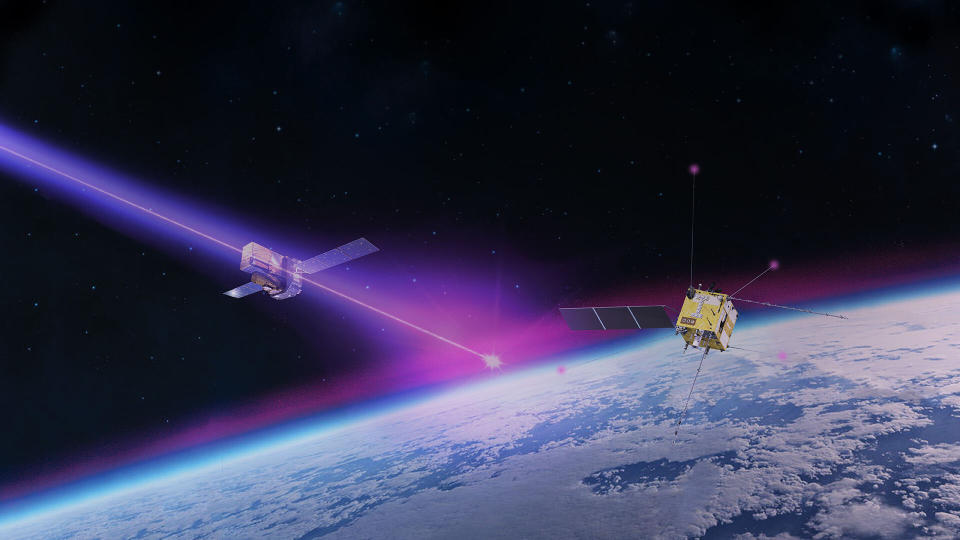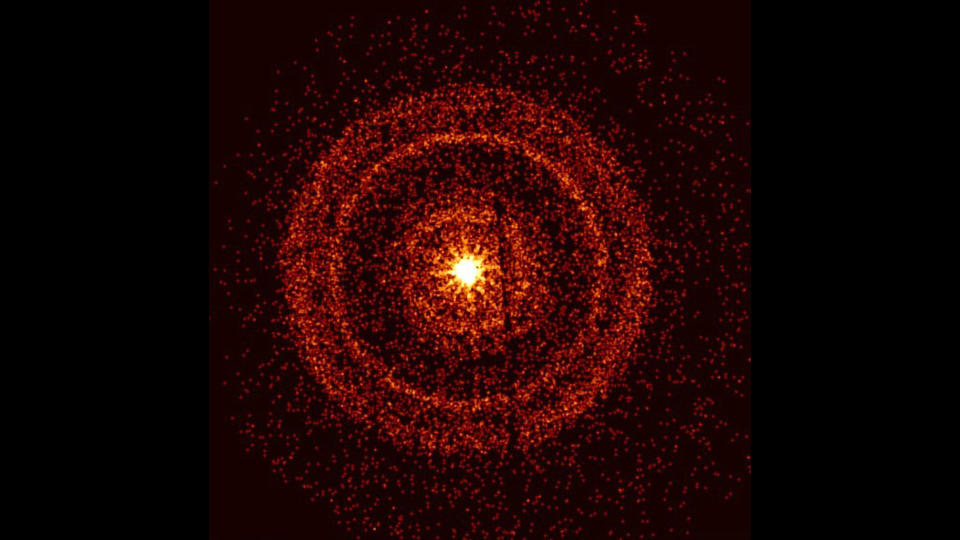NASA has officially stopped scientific observations made by its Neil Gehrels Swift Observatory.
Don’t worry though.
The space telescope, which observes some of the most powerful bursts of radiation from the universe’s most violent cosmic events, known as “gamma-ray bursts,” is temporarily out of order. NASA put Swift into safe mode on March 15 due to “degraded performance” of one of the three gyroscopes the space telescope uses to point itself toward astrophysical sources that astronomers want to study.
NASA said the Swift team has been tracking increased noise in the gyroscope for several months. In mid-March, the gyroscope’s performance deteriorated to such an extent that the spacecraft struggled to lock onto its star tracker and therefore make successful science observations.
Related: James Webb Space Telescope discovers rare heavy chemical element from ‘kilonova’ explosion
Swift was technically designed to continue meeting mission requirements in the face of one gyroscope failure, but its onboard flight software needs a patch to allow the satellite to function properly in dual-gyro mode.
“We are working to upload and install this patch, and we expect it will return the spacecraft to full functionality as quickly and safely as possible,” NASA wrote on its Swift website. “Until the patch is successfully deployed, scientific observations are expected to be very limited.”

How Swift treats the BOAT with powerful comments
Swift has been serving NASA and observing the high-energy cosmos for nearly 20 years since its launch from the space agency’s historic Cape Canaveral Air Force Station Complex 17-A on November 20, 2004.
Its main role is to observe GRBs, which are very intense flashes of gamma rays, the highest energy form of light. GRBs can last from a few milliseconds to a few hundred seconds. This means that Swift must alert ground-based telescopes very quickly about a GRB to allow them to focus on its afterglow.
To solve the mystery of the events that trigger GRBs, be it the collapse of a giant star, the birth of a black hole or the collision and merger of neutron stars, Swift observes the universe with three multi-wavelength telescopes covering visible, ultraviolet, X-ray and gamma-ray light .


One of Swift’s most remarkable discoveries during its two decades of operation is the GRB scientists call the “Brightest Of All Time” or the “BOAT.”
The BOAT could be the most powerful space explosion since the Big Bang.
The BOAT was spotted by Swift on October 9, 2022, and the burst immediately stood out from other GRBs due to its extreme nature. The BOAT, which he officially named GRB 221009A, was first observed as an extremely bright flash of high-energy gamma rays, and this initial emission subsequently flared over enough wavelengths of light.
The BOAT was at least 10 times as energetic as other GRBs seen by Swift, and the photons detected as part of this GRB carried more energy than the particles accelerated to near-light speeds in a particle accelerator. humanity’s largest, the Large Hadron Collider (LHC). It is believed that the BOAT star, with a mass equal to 30 suns, reached the end of its life and went supernova towards the constellation Sagitta.
This explosion happened so far away that its light traveled for 2.4 billion years before Swift detected it.
RELATED STORIES:
— Boom! Astronomers were just watching the biggest explosion in space-rage in 3 years
— Have the scientists solved the mystery of the super bright ‘cows’ that exploded in space?
— Scientists have observed the massive X-ray burst of a white dwarf for the 1st time ever
Swift may be an “old dog” in space telescope terms, but that doesn’t mean it can’t learn new tricks.
In September of 2023, for example, NASA revealed that the spacecraft had discovered a black hole in a galaxy located about 500 million light-years away, repeatedly knocking on a sun-like star. The event was named Swift J0230, and was made possible by a new method of analyzing data from the satellite’s X-ray Telescope (XRT). This heralded a whole new era of Swift science which astronomers hope can be restarted soon.
“The hardware, software and skills of its international team enabled Swift to adapt to new areas of astrophysics over its lifetime,” said Phil Evans, an astrophysicist at the University of Leicester in the United Kingdom and a longtime Swift team member, last year. . “Neil Gehrels, the mission’s namesake, oversaw and encouraged many of those transitions. Now, with this new capability, he’s doing more science.”
Scientists will no doubt be eager to see this pioneering space telescope again and see what new, high-energy features of the universe it will reveal next.